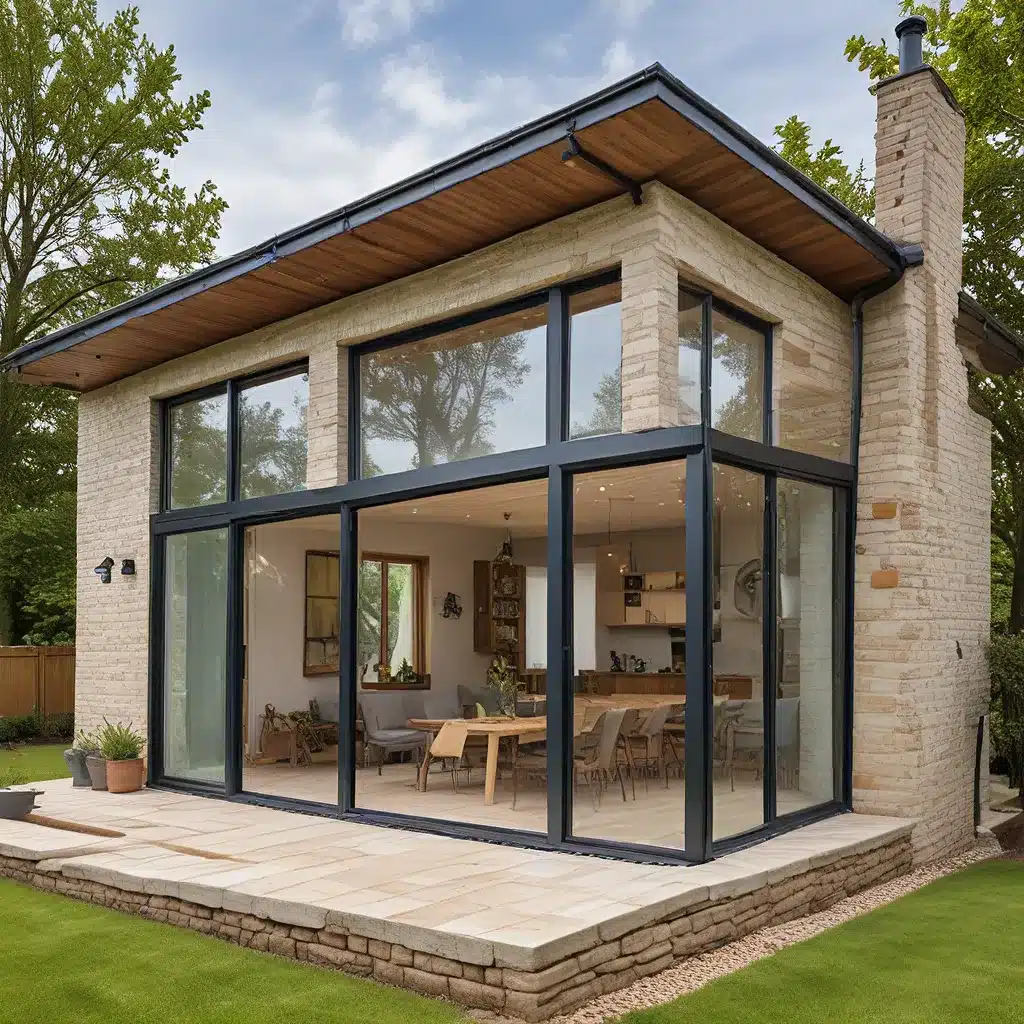
As a homeowner, I’ve always been passionate about creating a comfortable, energy-efficient living space. When it came time to consider a home extension, I knew I wanted to explore sustainable options that would not only expand my living area but also reduce my environmental impact. That’s why I was thrilled to discover the wealth of strategies and technologies available to enhance energy efficiency in home extensions.
Maximizing Insulation for Thermal Comfort
One of the cornerstones of energy-efficient home design is insulation. By strategically improving the insulation in my home extension, I could significantly reduce heating and cooling costs, creating a more comfortable living environment year-round. The U.S. Department of Energy recommends using high-performance insulation materials like spray foam, rigid foam, or blown-in cellulose to achieve optimal thermal performance.
But it’s not just about the insulation itself – the placement of insulation is also crucial. I learned that insulating the exterior walls, roof, and foundation of the home extension can provide the greatest energy savings. By creating a continuous thermal barrier, I can minimize heat transfer and keep my living spaces at the desired temperature with less effort.
Embracing Passive Solar Design
As I delved deeper into sustainable home extension strategies, I was particularly intrigued by the concept of passive solar design. This approach harnesses the power of the sun to naturally heat and cool my living spaces, reducing the reliance on energy-intensive heating and cooling systems.
By strategically positioning windows, doors, and other glazed surfaces to capture solar radiation during the colder months, I can take advantage of the sun’s free thermal energy. Conversely, in the warmer months, I can use techniques like shading, thermal mass, and natural ventilation to prevent the sun’s heat from entering the home and minimize the need for air conditioning.
The European Commission’s Renovation Wave initiative highlights the significant potential of passive solar design, noting that it can reduce heating and cooling demands by up to 50%.
Optimizing Windows and Doors
Another crucial component of energy-efficient home extensions is the selection and placement of windows and doors. By choosing high-performance, double-glazed, or even triple-glazed options, I can minimize heat transfer and improve the overall thermal insulation of my home.
But it’s not just about the glazing – the orientation and size of these openings play a vital role as well. Positioning larger windows on the south-facing side of the home extension can maximize passive solar gain, while strategically placed shading devices can help control the amount of sunlight that enters the space.
The City of Boston’s energy efficiency strategies emphasize the importance of optimizing windows and doors, noting that they can account for up to 30% of a home’s total heat loss.
Integrating Renewable Energy Sources
As part of my quest for a sustainable home extension, I was determined to explore the potential of renewable energy sources. By incorporating technologies like solar photovoltaic panels, solar thermal collectors, or even ground-source heat pumps, I could generate my own clean, renewable energy and further reduce my carbon footprint.
The solar photovoltaic panels on my roof, for example, have been a game-changer, allowing me to generate my own electricity and potentially even sell excess power back to the grid. And the solar thermal collectors have been an efficient way to heat my domestic hot water, reducing my reliance on fossil fuels.
The European Commission’s Renovation Wave initiative highlights the need for increased adoption of renewable energy technologies in building renovations, as a key strategy for achieving their ambitious climate goals.
Optimizing Building Systems and Controls
In addition to the physical design elements, I’ve also discovered the importance of optimizing the building systems and controls within my home extension. By installing smart thermostats, energy-efficient appliances, and LED lighting, I can further enhance the overall energy efficiency of my living space.
The smart thermostat, for example, allows me to remotely monitor and adjust the temperature in my home extension, ensuring that I’m only using energy when and where it’s needed. And the energy-efficient appliances have been a game-changer, reducing my electricity and water consumption without compromising on performance.
The City of Boston’s energy efficiency strategies highlight the importance of optimizing building systems and controls, noting that they can contribute significantly to overall energy savings.
Embracing the Renovation Wave
As I reflect on my journey towards a more energy-efficient home extension, I’m reminded of the Renovation Wave initiative championed by the European Commission. This ambitious program aims to double the annual energy renovation rate of buildings across Europe, with a focus on improving their energy performance and reducing their environmental impact.
The Renovation Wave recognizes the crucial role that home extensions and renovations play in achieving sustainable energy targets, and it has inspired me to take a more holistic approach to my own project. By combining the strategies I’ve learned – from maximizing insulation to integrating renewable energy sources – I’m confident that I can create a comfortable, energy-efficient living space that aligns with my values and contributes to a more sustainable future.
If you’re considering a home extension or renovation, I encourage you to explore the services offered by ABC Home in Aberdeen, UK. Their team of expert builders and energy consultants can help you navigate the exciting world of sustainable home design and ensure that your project is not only visually stunning but also environmentally responsible.
Remember, every step we take towards energy efficiency and sustainability has the power to make a lasting difference – for our homes, our communities, and our planet. So, let’s embrace the Renovation Wave and create the energy-efficient living spaces of the future, one home extension at a time.
















